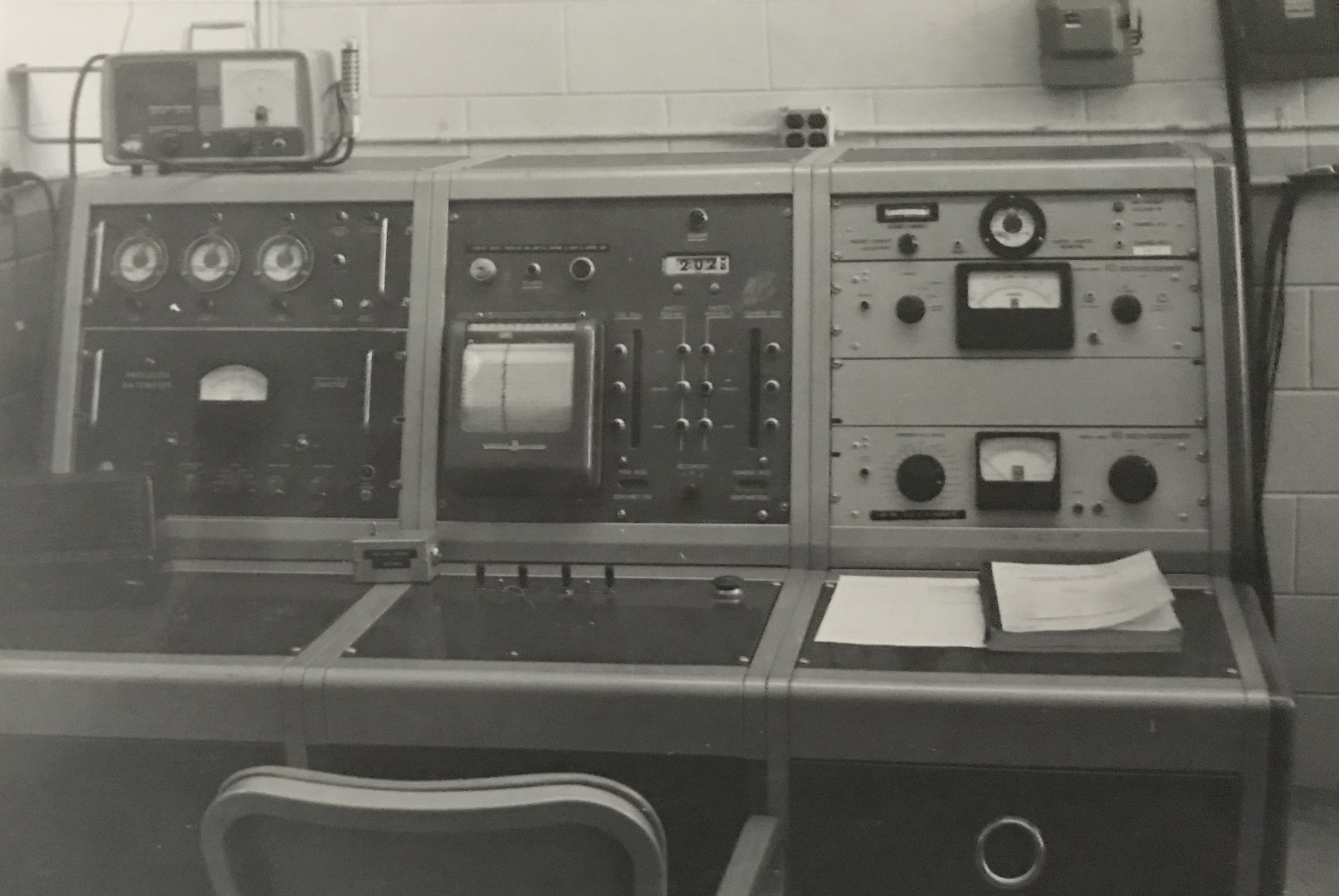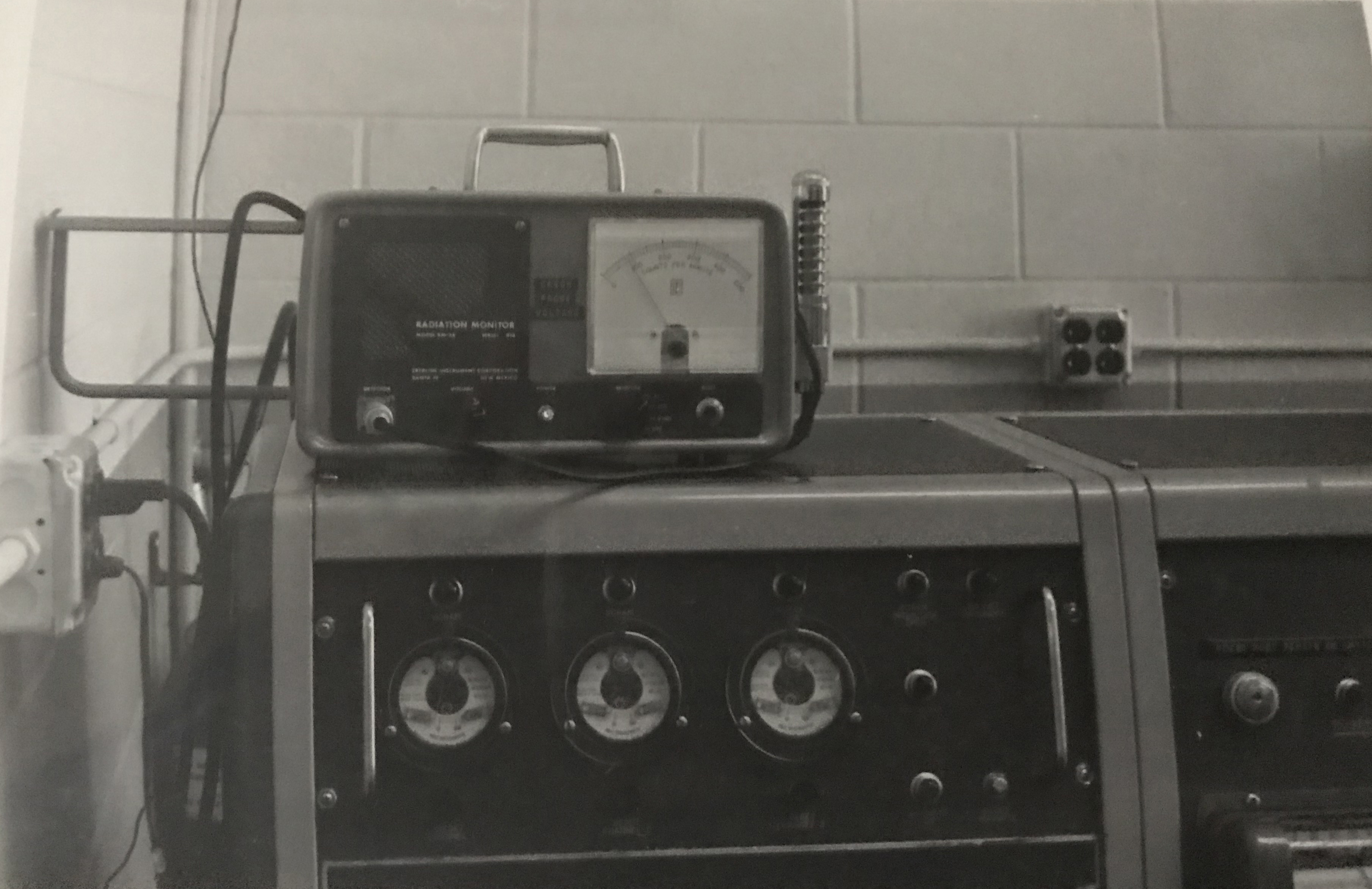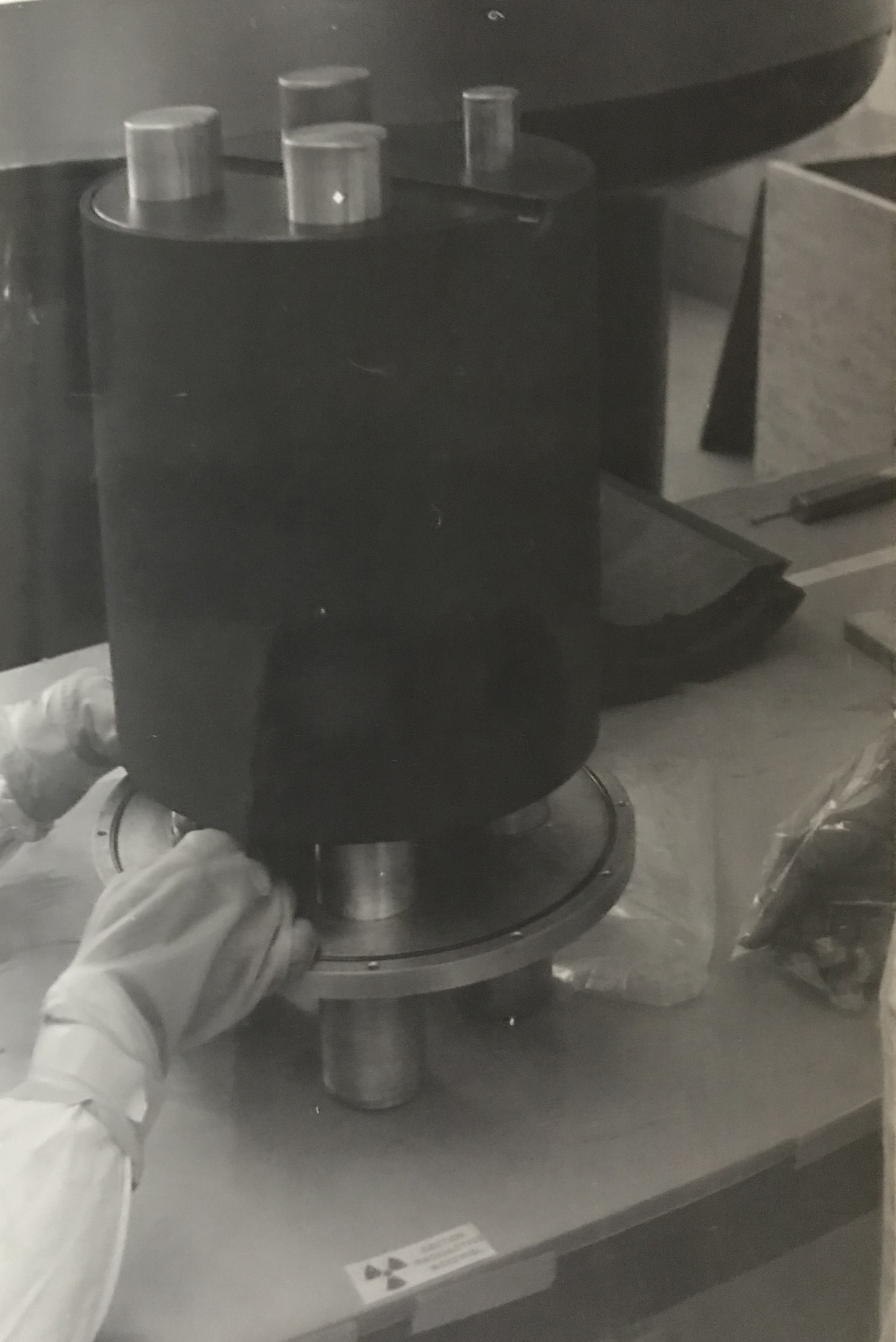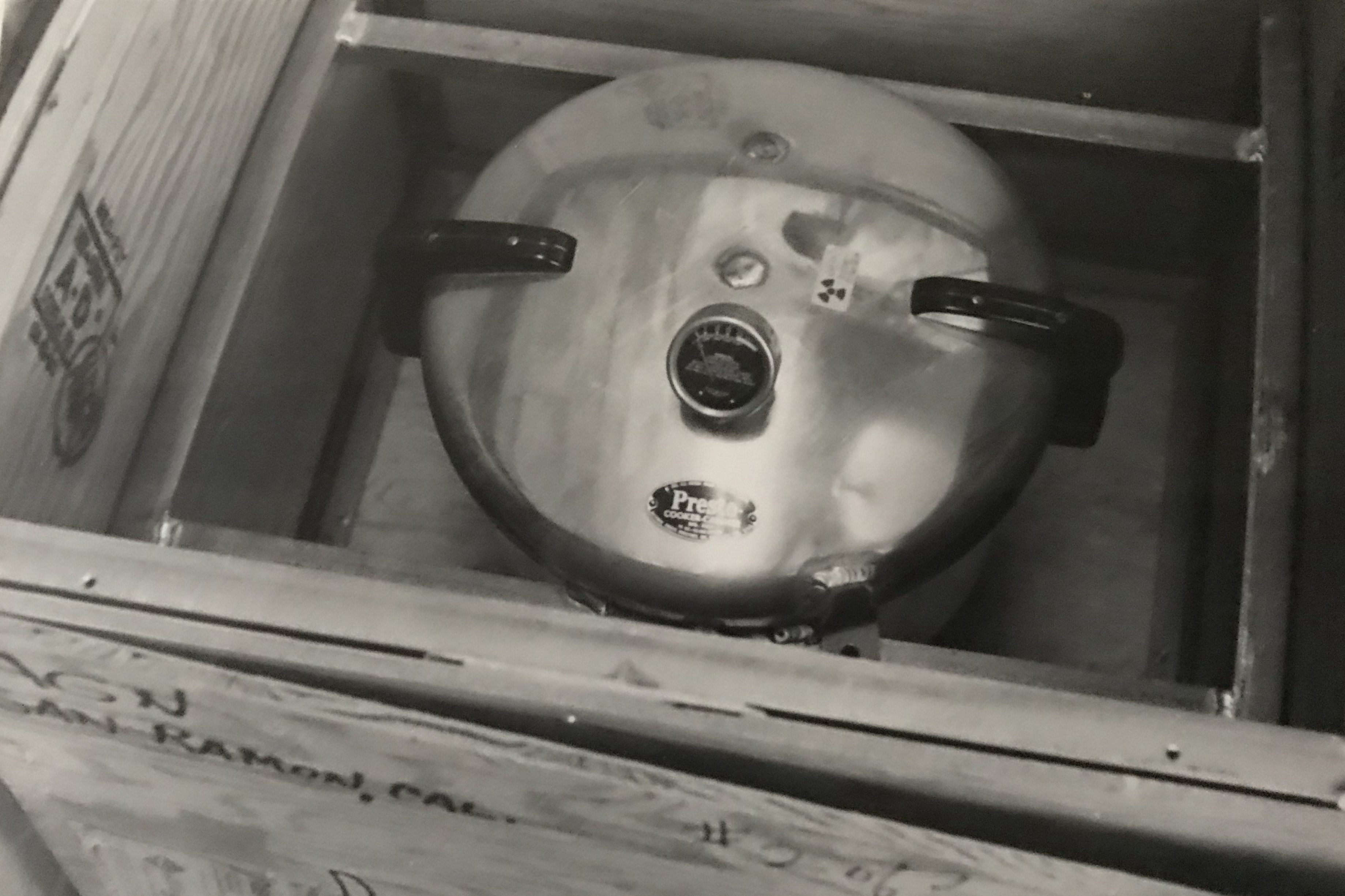Recent News
New director will enhance interdisciplinary engineering learning opportunities
July 2, 2025
Final SIRI cohort visits UNM campus
June 30, 2025
Perfetti receives ANS Landis Engineering Achievement Award
June 26, 2025
Engineering a new treatment for ovarian cancer
June 24, 2025
News Archives
UNM’s nuclear reactor celebrates 50th anniversary with historical symposium
April 15, 2019 - By Kim Delker

April 1969. Tommy Roe’s “Dizzy” was the top single record. Nixon was president. Miniskirts were a major fashion trend. And Neil Armstrong’s moon landing was just a few months away.
Also on April 3, 1969, the nuclear reactor at The University of New Mexico went “critical” for the first time in its current location, the Nuclear Engineering Laboratory, meaning it was brought to a steady power level.
UNM will celebrate the 50th anniversary of this event with a symposium on April 23 from 1-4 p.m. in Stamm Commons in the Centennial Engineering Center.
The event will feature memories from former professors and students in the program, a discussion about the history of UNM’s reactor, and a presentation about the world’s first nuclear reactor, the Chicago Pile-1, and a literal piece of history from that machine on display.

Robert Busch, professor emeritus in the Department of Nuclear Engineering, has been with UNM for as nearly as long as the reactor has been in the Nuclear Engineering Laboratory at the university, arriving as a doctoral student in 1971, so he has extensive experience and memories with the AGN-201M reactor, one of only two models like it in the U.S.
Busch said UNM’s reactor was manufactured in the late 1950s, like many reactors were in the Cold War era, and first had a home at the University of California, Berkeley. When the university decided to buy a new reactor, UNM was able to broker a deal to have the teaching reactor brought to campus for merely the cost of the shipping. Historical photos show that the nuclear fuel was transported from California in Presto pressure cookers, reinforced by wooden crates.
The reactor landed on campus in the summer of 1966, assembled and housed in what was then the mechanical engineering building (located between what is now the Centennial Engineering Center and the Mechanical Engineering Building).
About three years later, after the completion of Farris Engineering Center and the Nuclear Engineering Building, the reactor was moved into the nuclear engineering lab, where it resides today.

Busch said the fact that UNM has its own reactor is somewhat unique for a university. Only around 30 university-owned reactors still exist, and UNM’s is the only one in New Mexico. UNM’s reactor is extremely low-power, about 5 watts (enough to power an iPhone USB power adapter), and is essentially “student-proof,” since a licensed operator must be in attendance every time the reactor is run. It is encased in a heavy concrete structure, with several barriers around the building to prevent a vehicle running into the building.
Busch remembers that in May 1972, Vietnam War protests were raging outside on University and Central, with police firing tear gas. One student decided to take refuge in the nuclear engineering labs, saying he was safer by the reactor than on the streets.
Busch said that even though the teaching reactor is a low-power reactor, it provides students with invaluable experience they can get few other places.
“Every nuclear reactor behaves the same way — through nuclear fission. it’s just the number of neutrons that differs,” Busch said. “Our seniors get a chance to operate a reactor, get a feel for it and decide if it’s something they are comfortable with. It takes the theory they learn in class and puts it into action with experiments.”
Busch said that the reactor is so low in power, the students can actually handle the fuel, and one-third of the core is taken out every semester.
The experiments the students perform on the reactor, and the reactor itself, have remained basically unchanged in 50 years, but what has changed is the control panel. The 1950s knobs and switches were completely rebuilt years ago with solid state systems, which provide more precision and reliability, Busch said. Although most of the equipment was replaced, the original control rod switches are still used.
Although nuclear power has gone through many ups and downs — often tied into the political climate — through the decades, Busch said that nuclear power and the study of nuclear engineering is still incredibly relevant and a much-needed skill in today’s world.

Busch said in addition to the ever-growing need for maintenance and developing solutions for decommissioning weapons, demand exists in the health-care industry, the space industry and the power industry.
“About 20 percent of our electric power in the U.S., and about 30 percent in New Mexico, comes from nuclear power,” he said.
Two new nuclear reactors are planning to go online in Georgia in 2021 — the first new reactors since the 1990s — but he said the greatest potential in the field exists in the production of small, modular reactors of around 100 megawatts or less, which can provide power to about 100,000 homes. Nuclear engineers will also be needed in the future to develop solutions for transitioning the many reactors that will be reaching the end of their functional lives around 2040, he said.
“There is a market for reactor people,” he said.
Busch would like to have as many alumni of the nuclear engineering program attend the event as possible. To RSVP, email busch@unm.edu or cbrozena@unm.edu. Busch is also seeking written recollections, documents or pictures about the reactor.
There will also be a gathering after the symposium of nuclear engineering alumni from 5:30-7:30 p.m. at O’Niell’s, 4310 Central Ave. SE, Albuquerque. Please email busch@unm.edu or cbrozena@unm.edu to attend this event.
